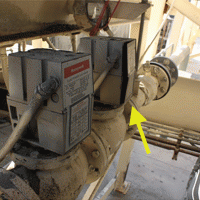We have a saying at Warren, “When we go to work on a new case, usually someone else has had a very bad day.” If you are a plant manager at a factory, you know it’s a bad day when you hear the fire alarm or a loud explosion emanating from the back of the plant.
A large part of our work at Warren involves investigating fires and explosions, and in some cases we evaluate the electrical control systems of industrial equipment to determine if problems with the controls had a part in causing the fire or explosion.
Equipment like chemical reactors, boilers, incinerators, ovens, furnaces and others have control systems that, when operating correctly, keep the system within safe limits. The systems use various control devices such as pressure switches, limit controls (pressure, temperature, level, etc.) and other sensors in combination with final control devices like valves and motors. The system responds using logic that is both inherent in the hardwiring between the devices, and resides in controllers like flame safeguards or programmable logic controllers (PLC’s). Additionally, various devices like fuses, circuit breakers, and overload relays are used to keep electrical currents within safe limits.
The above really just scratches the surface of electrical control system components and design. Evaluating the control system design, and a forensic examination of these devices is a normal part of most industrial fire and explosion investigations. While a control system device can malfunction and cause an explosion, it is more common that either the overall system design is improper, or a safety device has been bypassed.
In our investigations, we have seen a number of electrical control system safety devices bypassed that did or could have resulted in fires or explosions. I thought it might be interesting to see a few.

Figure 1: Low water cut out from a boiler explosion investigation. Someone has bent the actuating tabs on the boiler low water cut out. This would be an indication that “adjustments” were made to the safety controls prior to the explosion.

Figure 2: Gas valves from a process furnace that experienced an explosion. The final gas safety shut off valve has its wiring cover partially open. This can be an indication that someone was directly powering the valve and bypassing the control system safety logic. Open wiring covers on controls should be fully investigated.

Figure 3: A low fluid level cut out from a thermal oil fluid heater that caught fire. Note that the two wires are installed under one terminal on the device. This results in the level control always indicating a safe fluid level even when the system is dangerously low on fluid.

Figure 4: A burner valve junction box that has had a number of “jumpers” installed. Jumpers may be normal and benign or installed to bypass safety controls. They should always be investigated.

Figure 5: A control circuit fuse from a thread spinning machine that experienced a fire. The fuse has been wrapped with a metal sleeve that, when installed in the fuse holder, bypasses the protective fuse. A short in the circuit normally protected by this fuse could cause overheating in the wiring to the point of causing a fire.
Founded in 1997, The Warren Group, forensic engineers and consultants provides technical investigations and analysis of personal injury and property claims as well as expert testimony for insurance adjusters and attorneys. Extremely well versed in the disciplines of mechanical, electrical, chemical, structural, accident reconstruction and fire and explosion investigation, our engineers and consultants are known for delivering the truth — origin, cause, responsibility and cost of an event or claim — with unmistakable clarity.



